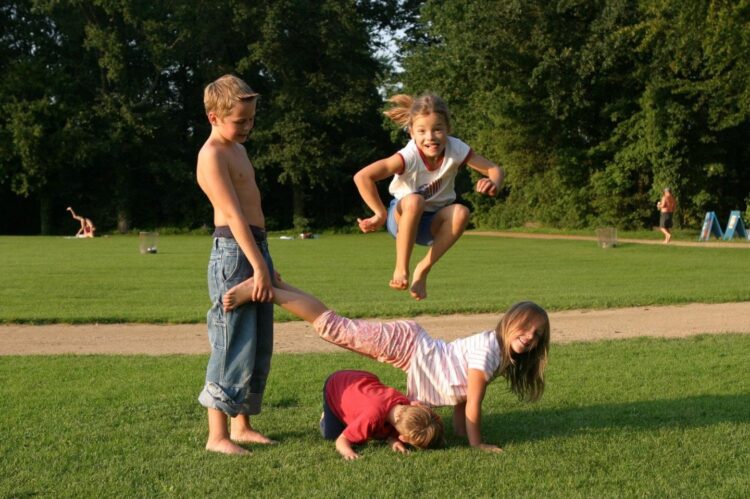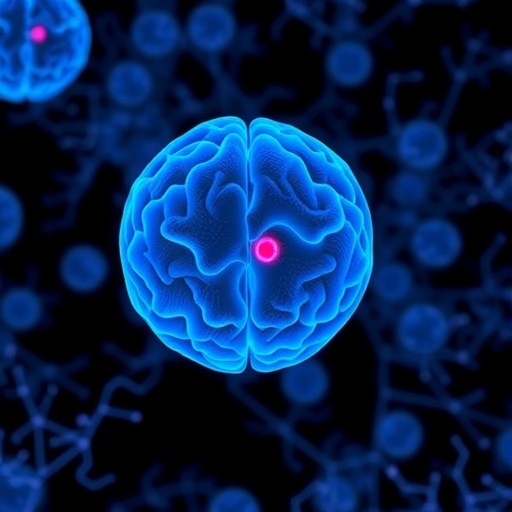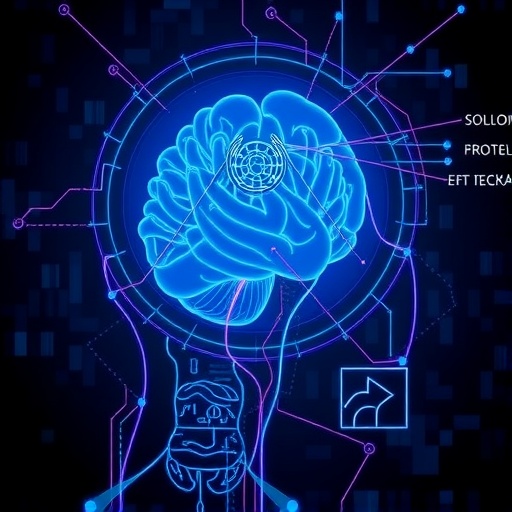While schools and sports clubs were closed, daily physical activity of children and adolescents increased — study compares data before and during the lockdown in spring 2020

Credit: Martin Köhler, Motorik-Modul Study
In spring 2020, when soccer and sports clubs closed for sever-al weeks due to the Corona pandemic, children and adoles-cents looked for alternative physical activities. According to a supplementary study covering more than 1700 children and adolescents aged from 4 to 17 as part of the Motorik-Modul Study (MoMo) conducted by Karlsruhe Institute of Technology (KIT) and Karlsruhe University of Education (PHKA), the chil-dren were physically active about 36 minutes longer every day, but also spent an hour more in front of screens and monitors. The results are reported in Scientific Reports. (DOI: 10.1038/s41598-020-78438-4)
“Surprisingly, boys and girls looked for a replacement of the cancelled sports offers, also those, who had not been physically active before,” says Dr. Claudia Niessner. The scientist from KIT’s Institute of Sports and Sports Science (IfSS) and her colleague Dr. Doris Oriwol, KIT and PHKA, manage the project, the findings of which are now published in the Scientific Reports of Nature Research. Closure of schools, sports facilities, and playgrounds from mid-March to early May to contain the Corona pandemic was both bad luck and an opportunity for the ten researchers. They had to suspend the field studies of their Motorik-Modul Study (MoMo) on motor skills and physical activities of children and adolescents during the lockdown, but seized the opportunity to organize online surveys. “We responded quickly and used the lockdown phase well. Comparison of the situations before and after lockdown was only possible, because we have long-term data, the only database of this kind worldwide,” Niessner says. Among others, the researchers found that both the time of general physical activities and the time spent in front of screens and monitors increased.” More time spent for using media does not necessarily mean less physical activity. In both areas, there are U-shaped relationships with a healthy lifestyle,” says Dr. Steffen Schmidt, first author of the scientific publication made as part of the MoMo research project.
Everyday Physical Activities Are Less Intensive than Organized Sports
“According to our survey, everyday activity increased. Still, it was just a snapshot in an extraordinarily warm spring, and quantity is not quality,” says Professor Alexander Woll, Head of IfSS and Director of the MoMo study started in 2003. “Playing outside, cycling, gardening or housework do not have the same intensity as training and competitions in organized sports. Moreover, social aspects are lacking when clubs and schools are closed,” says the sports scientist. “Before the lockdown, we had the highest level of organized sports ever. About 60% of the children and adolescents in Germany are active in sports clubs. The long-term impact of lacking sports at schools and clubs on motor skills or overweight are not yet known,” Woll says. According to the study, closure of sports clubs resulted in an average daily decline in sports by 28.5 minutes. “Digital offers of physical activities have increased and will continue to increase, but there is a difference between physical activity in front of the screen or running across a green meadow,” Woll says. In addition to their everyday activities, children and adolescents spent about 18 minutes per day more for “non-organized sports,” such as playing football, basketball or badminton, i.e. about 24 minutes instead of just seven minutes prior to the lockdown. Although the 60 minutes of physical activity per day recommended by WHO were not reached, the lockdown turned out to promote physical activity, Woll says. As regards the activity behavior during the current lockdown in winter, the sports scientist is more skeptical. He thinks that it is positive that schools are still open. But outdoor activities will presumably decrease in the cold and dark season, he says.
Living Environment Plays an Important Role
“Our study shows that the living environment of children and adolescents plays a major role,” says sports scientist Niessner. While physical activity was highest for children living in a single-family house in a small municipality, it was lowest for children and adolescents living in multi-story buildings in large cities. “Free movement spaces are disappearing in urban planning. Countermeasures are urgently required,” Woll says.
The MoMo Study is a joint project of KIT and PHKA. Deputy Project Director Professor Annette Worth, PHKA, explains: “As regards physical activity in times of Corona, school plays an important role. Teachers instruct, assist, give a feedback, and motivate. This is particularly important for children, where physical activities, games, and sports play a minor role at home.”
The MoMo Study on the development of motor skills and physical activities of children and adolescents is part of the Germany-wide study on the health of children and adolescents in Germany (KiGGS) of Robert Koch Institute (RKI) and is funded by the Federal Ministry of Education and Research (BMBF). If possible, MoMo will be continued in 2021 to study long-term impacts of quantitative and qualitative changes of physical activities, including changes resulting from the pandemic, on the development of motor skills and health of children and adolescents in Germany.
###
Original Publication:
Steffen C. E. Schmidt, Bastian Anedda, Alexander Burchartz, Ana Eichsteller, Simon Kolb, Carina Mnich, Claudia Niessner, Doris Oriwol, Annette Worth & Alexander Woll: Physical Activity and Screen Time of Children and Adolescents before and during the COVID-19 Lockdown in Germany: A Natural Experiment. Scientific Reports 2020.
http://www.
Information on the Motorik-Modul Study (MoMo):
http://www.
Contact for this press release:
Sandra Wiebe, Press Officer, Phone: +49 721 608-41172, sandra wiebe?kit edu
Press contact:
Regina Schneider, Press Officer PHKA, Phone.: +49 721 925-4115, E-Mail: regina schneider?vw ph-karlsruhe de
As an educational science institution with the right to confer doctoral and habilitation degrees, Karlsruhe University of Education (PHKA) conducts research and teaches in the area of school education and extracurricular education processes. Work focuses on STEM subjects, multilingual education and heterogeneity, as well as on active teaching-learning culture. Among the programs offered are teacher degree programs for primary and secondary school, bachelor’s and master’s programs for other education sectors, and professional advanced training courses. About 220 scientists supervise around 3600 students.
Being “The Research University in the Helmholtz Association”, KIT creates and imparts knowledge for the society and the environment. It is the objective to make significant contributions to the global challenges in the fields of energy, mobility, and information. For this, about 9,300 employees cooperate in a broad range of disciplines in natural sciences, engineering sciences, economics, and the humanities and social sciences. KIT prepares its 24,400 students for responsible tasks in society, industry, and science by offering research-based study programs. Innovation efforts at KIT build a bridge between important scientific findings and their application for the benefit of society, economic prosperity, and the preservation of our natural basis of life. KIT is one of the German universities of excellence.
Media Contact
Monika Landgraf
[email protected]
Original Source
https:/
Related Journal Article
http://dx.





